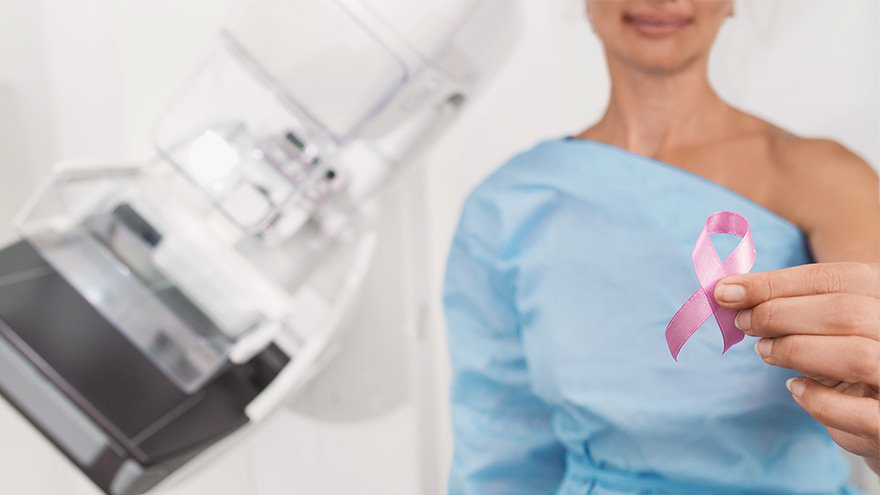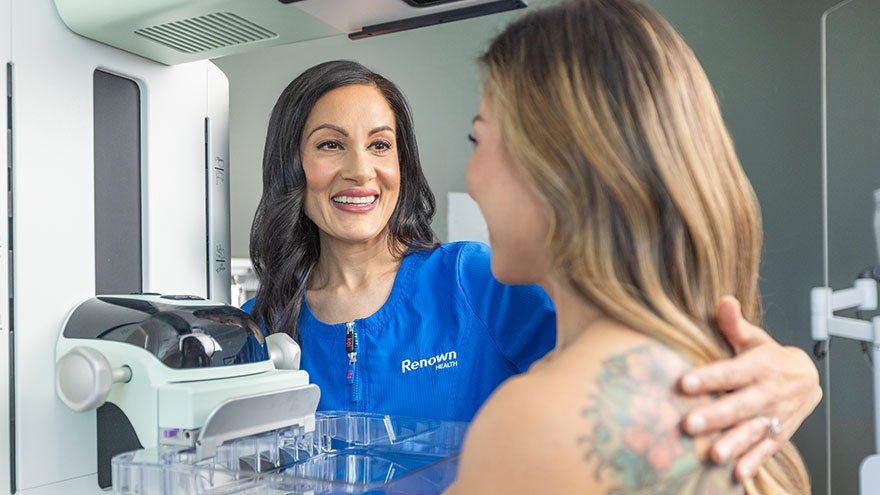
Do Mammograms Hurt? 4 Myths Debunked

Mammograms are an effective means for early detection of breast cancer. Still, many women shy away from them for fear of pain or discomfort. Let us debunk a few mammogram myths that will remove your worries and encourage proactive breast health.
Reviewed by Dr. Colleen O'Kelly-Priddy, MD, FACS, breast surgical oncologist at Renown Women's Health.
Myth 1: Mammograms Are Painful
Reality: Although some women experience discomfort during a mammogram, most say it is not painful. Breast compression, which is important to get a clear image, can cause a sensation of pressure, but this lasts for a few seconds. Let your technician know how much pressure you can handle so you're not uncomfortable.
Myth 2: Discomfort Persists Long After the Procedure
Reality: The sensation of pressure developed through the compression process diminishes quickly after the procedure. Most women go about their day afterward without experiencing any residual pain.
Schedule Your Mammogram

Myth 3: Smaller Breasts Hurt More
Reality: Breast size has relatively little to do with the amount of pain involved while getting a mammogram. The device adjusts to all breast sizes to ensure that the best images are captured at the lowest possible level of discomfort for all patients.
Myth 4: Mammograms Can Cause Breast Cancer
Realty: The amount of radiation used during mammography is minimal, and the risk of injury is very low. The benefits of early detection considerably outweigh the slight dangers of this procedure. Regular mammograms are an essential part of getting screened early for breast cancer when it is most treatable.
Tips for your appointment:
- Plan: Make your appointment the week after your menstrual period, when your breasts are least likely to be tender.
- Speak Up: If you're in pain, ask if the technician can make any changes.
- Just Breathe: Tension increases discomfort, so remain calm during the procedure.
Types of Breast Screenings
New technology and evolving screening guidelines are crucial for women to understand and choose the right screening method for their specific needs. The most common types of screenings available today are:
- 2-D Mammography: In a standard 2-D mammogram, the tech takes X-rays of the breast, compressing it top-to-bottom and side-to-side, providing a2-dimensional view in each direction. These pictures can show the radiologist if there are abnormalities you might not be able to feel.
- 3-D Digital Tomosynthesis Mammography: Renown Health offers cutting-edge 3D Tomosynthesis Mammograms at all locations. This technology creates detailed images by combining multiple X-ray layers, allowing radiologists to view the breast with greater precision. It's great for spotting anything unusual, from cancer to cysts, and decreases the need for additional call-back imaging.
- Whole-Breast Ultrasound: If you have dense breast tissue, this ultrasound is a game-change and uses sound waves—no radiation—to check for breast abnormalities, like ultrasounds for pregnancy. This 20-minute exam is recommended for those with dense breast tissue, improving early detection. It complements, but doesn’t replace, mammograms.
Related Blogs


Mammograms Matter: What to Expect to Help Ease the Fears
